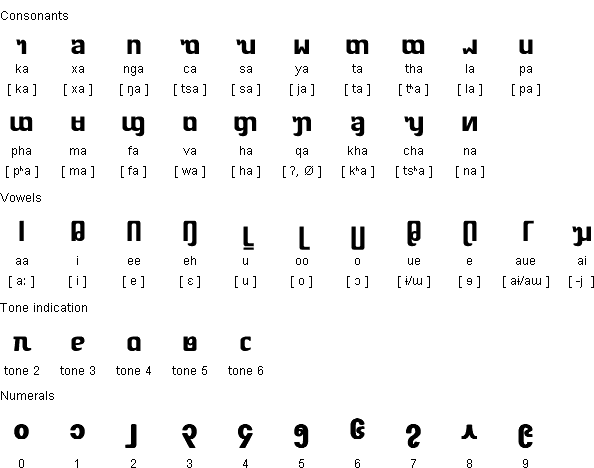Originally tones were not usually marked in the Dehong Dai script, and there was no distinction between some vowel sounds. In 1956 a revised version of the script with tones indicated by diacritics was officially launched, and in 1988 in another revision the tone diacritics were replaced by tone letters.
Notable features:
- Type of writing system: syllabic alphabet in which each consonant has an inherent vowel /a/. Other vowels are indicated by separate letters.
- Direction of writing: left to right in horizontal lines.
- Words are not separated by spaces. Instead spaces appear between clauses and sentences.
Used to write:
Dehong Dai, a Tai language with about 443,000 speakers mainly in Dehong Prefecture of Yunnan province in the southwest of China. It is also spoken in northern Vietnam, France, Laos, Myanmar, Switzerland, Thailand. The language has many names, including Tai Nüa, Tai Neua, Tai Le, Chinese Shan and Chinese Tai.Dehong Dai script

Sample text

This text uses the tone diacritics
This text uses the tone letters
Source: http://www.seasite.niu.edu/tai/TaiDehong/, with adjustments by Ian James
Links
Information about the Dehong Dai / Tai Nüa languagehttp://www.seasite.niu.edu/tai/TaiDehong
http://en.wikipedia.org/wiki/Tai_Nüa_language
No comments:
Post a Comment
Note: Only a member of this blog may post a comment.